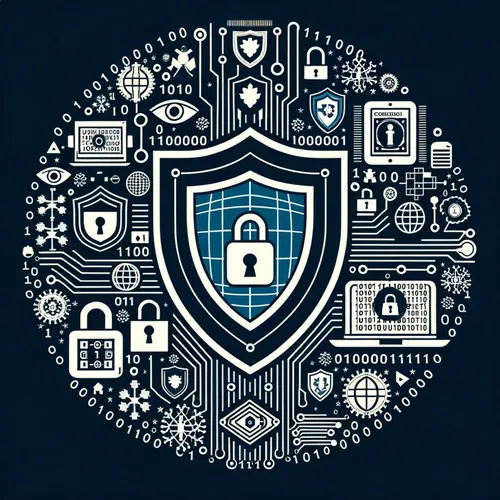China Hacks the Planet: Uncle Sam Scrambles to Patch the Gaps
- Author
- Quiet. Please
- Published
- Tue 27 May 2025
- Episode Link
- https://www.spreaker.com/episode/china-hacks-the-planet-uncle-sam-scrambles-to-patch-the-gaps--66298664
This is your Tech Shield: US vs China Updates podcast.
Call me Ting, your cyber sentinel and tea-sipping expert on all things China and hacking. Today is May 27, 2025, and if you’ve been following the cyber wires lately, it’s been quite a week on the virtual frontlines in the battle of Tech Shield: US vs China. Forget popcorn—grab a firewall, because things just escalated.
First, hot off the presses, the US Defense Intelligence Agency’s 2025 Threat Assessment hammered home what many of us suspected: China is doubling down on cyber and space warfare. The People’s Liberation Army’s Cyberspace Force—yes, that’s now its own official division—is directly under President Xi Jinping’s top brass. This PLA shakeup really sends a message: Beijing means business in the digital and orbital “fifth domain” of warfare. The DIA assessment spells it out: China-led cyber actors, from the PLA to the Ministry of State Security, are laser-focused on US networks, prowling for defense secrets, research data, economic intel, and anything else not nailed down. Intellectual property is on the menu, with a side of political and military espionage. Their endgame? Gaining long-term, asymmetric advantages where it hurts most: defense infrastructure, research institutes, and critical supply chains.
On the home front, the US isn’t just playing defense. This week saw House Republicans reintroduce the “Strengthening Cyber Resilience Against State-Sponsored Threats Act.” Sounds like a mouthful, but the goal is simple: bolster federal resources, close loopholes, and get ahead of groups like Volt Typhoon and Salt Typhoon—Chinese factions already known for burrowing into US critical infrastructure. Congressional hearings echoed one theme: the Chinese Communist Party’s cyber strategy isn’t just about disruption, but long-term infiltration and, if pressure mounts, outright control of key US systems.
Industry’s feeling the heat, too. Early 2025 saw cyberattacks targeting US government agencies soar by 136%, with groups like APT40, Mustang Panda, and the ever-busy APT41 leading the charge. These aren’t your script kiddies—these are advanced persistent threats, skipping old-school phishing and leveraging zero-day vulnerabilities. Not to be left out, the telecom sector clocked a 92% uptick in incidents, while tech companies faced a 119% spike.
How’s the US responding? Think patch frenzies and new advisories almost daily. Vendors and agencies are scrambling to shore up defenses, accelerate vulnerability patching, and roll out AI-driven anomaly detection. But there’s a gap: despite improved detection and response, experts warn that the sheer volume and sophistication of threats from China far outstrip current US defensive capacities. The private sector, especially critical infrastructure operators, is still playing catch-up as new exploits emerge every week.
My take? The US is moving in the right direction—new funding, tighter coordination, and, finally, some legislative backbone. But the cyber battlefield is evolving fast. Until public and private sectors are truly marching in digital lockstep, the dragons in Beijing will keep testing the armor. Stay patched, stay alert—and maybe invest in stronger passwords.
For more http://www.quietplease.ai
Get the best deals https://amzn.to/3ODvOta
